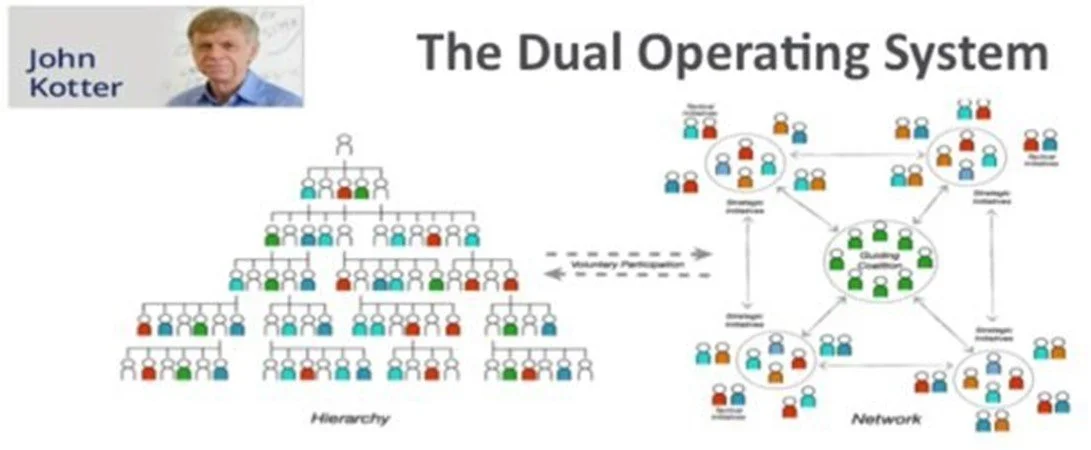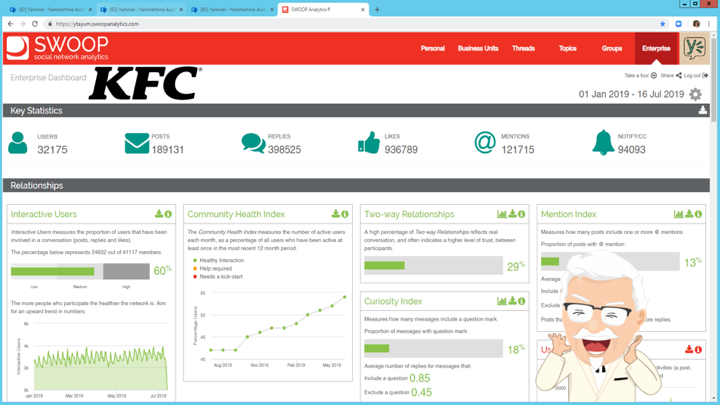Current challenges for retail firms shared at SWOOP Chat roundtable
Knowledge sharing is in SWOOP Analytics’ DNA. Our mission is to provide analytics to help organisations better collaborate. Collaboration and knowledge sharing go hand in hand. We have always felt that as we have grown globally, we are ideally positioned to identify which of our customers can learn from each other. Many of our larger SWOOP clients are retailers. We have acknowledged the importance of this sector through the publication of our recent whitepaper Workforce Analytics and the Retail Industry in the Hybrid Working Era; where we address the common challenges faced by the retail industry in this time of great change for frontline workers and their managers.
To further engage with our retail sector clients, we recently hosted a SWOOP Chat roundtable for our US retail clients. The roundtable offered participants the opportunity to share their experiences with how they are using SWOOP to help address some of their challenges. The issues discussed were shared openly amongst peers. We purposefully chose not to record these sessions, so participants could be totally open and transparent.
We do feel, however, that our global retail customers and prospects would benefit from seeing the broad topics of concern, along with a broader suite of responses derived from our global benchmarking and published case studies.
Key topics of concern
We present the topics discussed along with some considered responses below:
Data privacy issues, how they are dealt with by global firms
This is a big one and unsurprisingly it was an issue for the larger retailers working across different jurisdictions. Of course, the issue is critical for a company like SWOOP that provides human-centred insights, right down to the privacy protected personal level. But what does “privacy protected” really mean?
There are two perspectives that can be taken on privacy:
Protecting personal data from unintended exposure
The use of personal data by management
The first perspective is addressed through the platform vendors and the technology, processes and practices put in place. Many of these processes and practices are audited against accredited international standards of performance, e.g. GDPR. Reputational damage related to privacy violations can be an even greater deterrent; something major vendors like Microsoft and Facebook have experienced first hand.
The second perspective relates to how management uses the private data they have free access to. Typically, certain managerial roles - be they in the HR, IT security or senior management roles - do have access to personal data. How they make use of this data will determine how employees feel about whether their privacy has been violated or not.
The movement to hybrid ways of working may have a major impact on “perceived” privacy. If staff believe they have more control over the way they work and they have a high trust relationship with their management, then personal data can be used to constructively improve how staff collaborate and perform. This is certainly our view at SWOOP. On the other hand, if a movement back to the office means a move back into a low trust command and control environment; then how management chooses to make use of personal data will always be perceived as a privacy violation risk.
2. Placing a value on your internal social network and measuring it? How to embed it in your organisation. e.g. do colleagues have Yammer goals in their performance agreements?
We subscribe to Harvard Professor John Kotter’s view of organisational change:
Kotter’s dual operating system positions the network alongside the formal organisation. Our prior research has been directed at how Yammer or Workplace by Meta, as the internal social networks, interact with the formal organisation. And, in fact, how the network can invisibly resist formal change initiatives.
The short answer to the question posed is: yes, contributions to the network (Yammer or Workplace) need to be formally incorporated into performance assessments managed through the hierarchy. Additionally, some Yammer or Workplace communities should be incorporating within their community goals, business goals, set by the formal side of the business. This is an example of what Kotter refers to in his “dual operating system” in action.
3. Onboarding new hires, and the role of collaborative tools in onboarding during the pandemic
New hires onboarded during the pandemic did not have the benefit of the enculturation provided by the rich cultural signals of the physical company office, like those in the pre-pandemic era. This has left them at a decided disadvantage in moving their careers forward, compared with those who joined prior to the pandemic.
It is likely we might never see those pre-pandemic office-based environments again, with the big bets now being placed on hybrid office/remote environments. Hybrid working in itself will generate a whole new working environment, within which an organisational culture will emerge. Leaders will need to factor this in when looking to influence how that culture will form. One thing is certain; remote and virtual work will play an important role.
Tracey Brower, writing for Forbes on “On-boarding During the Pandemic”, hits the nail on the head when she writes: “your ultimate goal is to help new employees build social capital—networks of people and information which help them learn, grow and get their work done”. There is no better place for a new starter to begin to grow his or her social capital in the organisation than a healthy Yammer or Workplace network. In the absence of walking the office corridors, “walking the Communities” and becoming active and visible in them by helping others is arguably a more effective way of becoming known than walking the halls. Of course, the organisation needs to ensure that its Yammer or Workplace network is open and welcoming to new employees, as demonstrated in this Wiley case study.
Microsoft Teams, Slack or other teaming platforms also have an important role to play. New starters will invariably be assigned to a team. It’s important that digital teams are monitored for their “socialisation” of members. SWOOP’s Microsoft Teams product uses interactions in the digital channels of Teams to assess how cohesive a team is. A new starter building strong two-way connections with team peers is also building social capital that can support and sustain them through their onboarding process and beyond.
4. Engaging frontline colleagues and using tactics to compete against TikTok, Instagram etc for attention
Our “go to” client for engaging frontline workers is KFC Australia. You can get a sense of how KFC engages with its predominantly school-aged workforce in this case study. KFC has a practice of cycling high potential frontline workers into the Yammer community manager role for a 12-month period.
In 2019/2020 that community manager was Francesca Guidi, 19 years old at the time. Francesca said if she likes the content, she’s confident the whole KFC network will like the content. Another way to keep posts relevant is to keep up-to-date with social media trends.
“It’s really fun that I go onto Instagram and TiKTok at work and I’m researching, I’m not just mucking around on my phone,” Francesca said.
So, the message is, it’s not a competition for attention. KFC staff regularly cross post between Yammer and social media sites like TikTok and Instagram; places where its staff are. Think of these other social channels as an opportunity to amplify your Yammer engagement levels.
A screenshot from KFC Australia’s SWOOP dashboard.
(We were so impressed with Francesca when she presented her case study at SWOOP Chat Sydney, we recently hired her at SWOOP!)
5. Senior leader engagement, and engagement tactics
Our very first customer for SWOOP for Yammer was the Westpac Banking Corporation in Australia. When Westpac’s CEO was shown SWOOP, he insisted the IT department provide him with the SWOOP dashboard right next to other dashboards monitoring the health of the bank, on a daily basis. From that moment, we knew senior leader engagement was going to be a predictor of success for Enterprise Social Network (ESN) installations like Yammer or Workplace by Meta. We conducted research to quantify what impact senior leader activity on an ESN had on the network overall. We identified that executive leadership participation on the ESN can result in a 56% increase in overall activity and a whopping 146% increase in the number of connections made through your ESN.
We have written about how senior leaders can be engaged with your ESN. Essentially, senior leaders are always looking for ways to engage with their staff at scale. They already invest in channels like town hall meetings, email campaigns, and the Intranet, which are basically broadcast channels. We recommend positioning Yammer or Workplace as the “hearing aid”, rather than a “megaphone”. As social listening tools, ESNs can provide the unfiltered feedback that senior leaders are often looking for.
A specific tactic we have seen used by our consulting partners is to provide personal coaching for senior leaders on how to post and reply on their ESN. We suggest coaching senior leaders into posting open questions to all staff, explicitly inviting responses. SWOOP plays the role of measuring the impact of the senior leader’s posts and replies. Nothing succeeds more that seeing success. Once they see the impact they can have, they will be sold.
We were impressed by the energy of the discussions had by our retail participants. We have just completed another private SWOOP Chat roundtable with some of our health industry clients and prospects. Keep an eye out for a SWOOP Chat roundtable near you.




